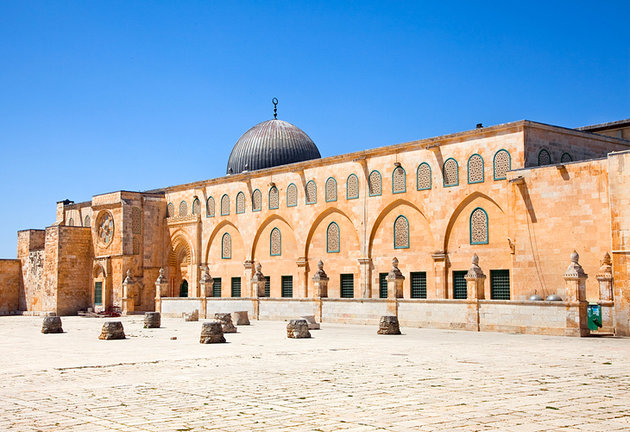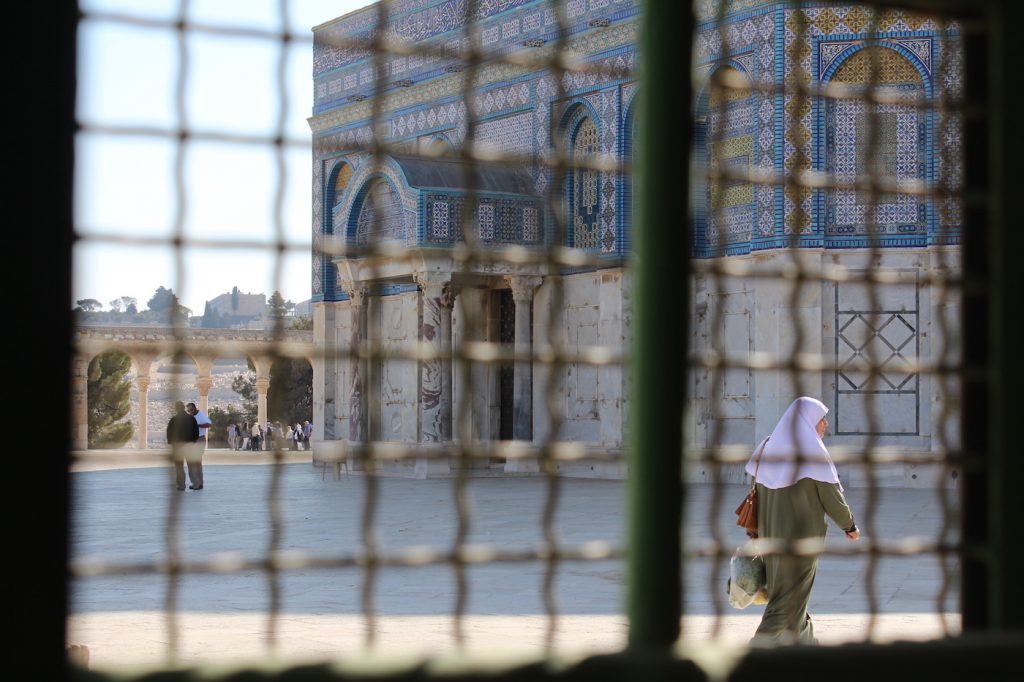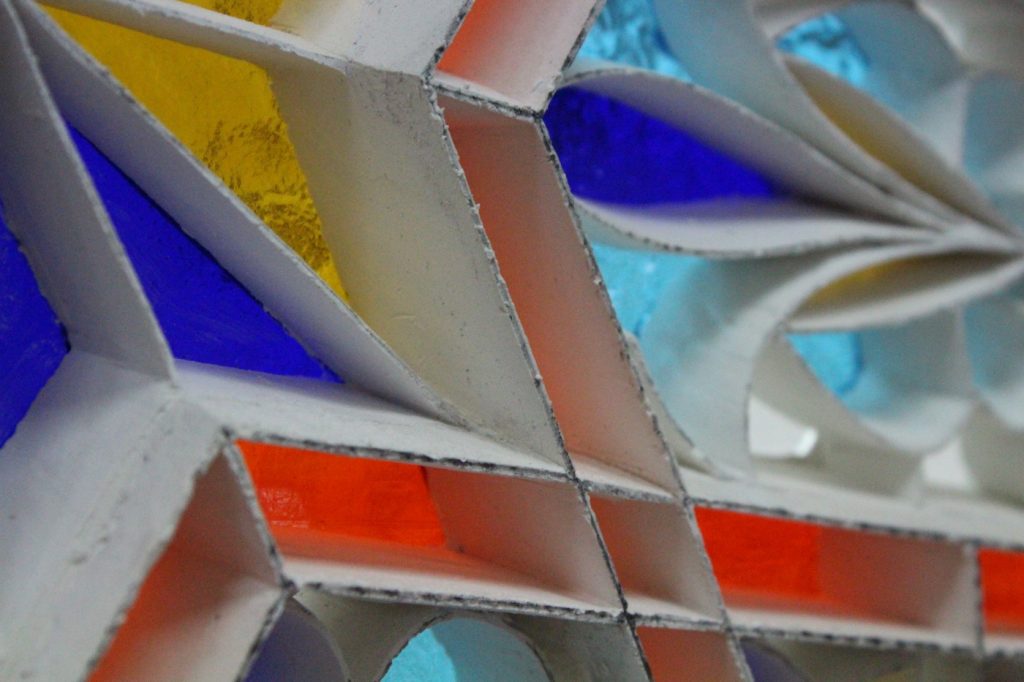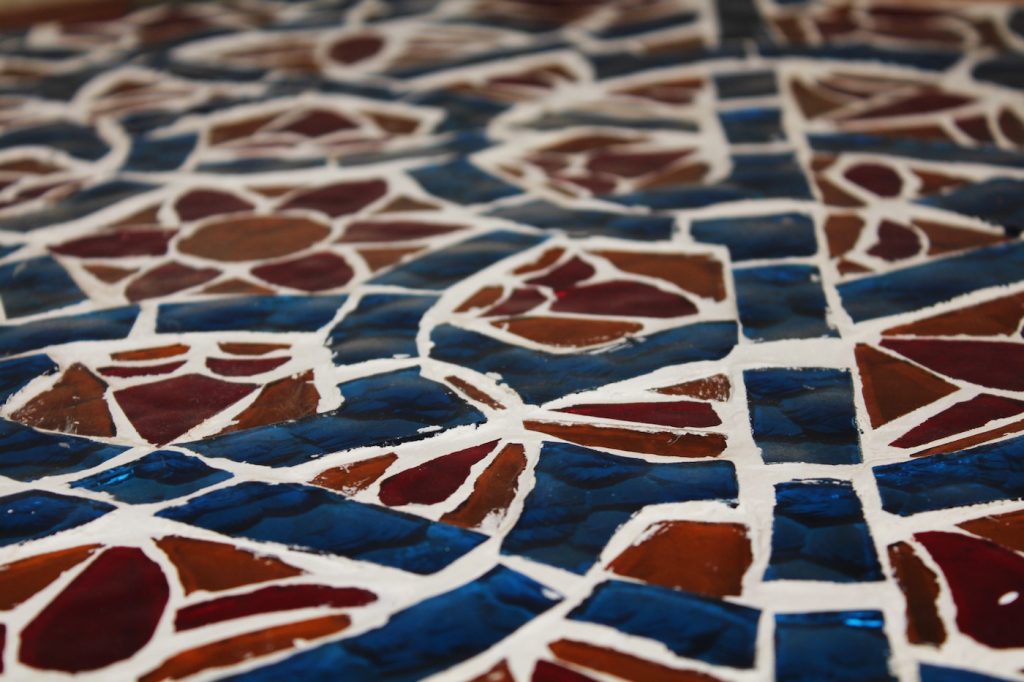When you think of stained glass windows, soaring Gothic cathedrals in France and England may come to mind, complete with intricate biblical scenes communicating morals to the masses and stunning rose windows. While both beautiful and iconic, European stained glass is only part of the stained glass tradition. Stained glass adorns many monuments worldwide, including some of the holiest sites in Islam–the al-Aqsa mosque and the Dome of the Rock.

Surprising? It shouldn’t be. The beautiful stained glass in these two Jerusalem sites (together known as the Haram al-Sharif in the Islamic tradition) has been worked by hands for generations. A recent report by Hyperallergic conducted an in-depth look into the fascinating craftsmanship of the al-Aqsa mosque’s gypsum-window workshop, revealing just how painstaking and beautiful the process behind creating these works is.

What exactly is a gypsum window? Gypsum is a mineral compound that can be used as the primary ingredient in various types of plaster, among other things. The gypsum used to hold together the stained-glass windows at the al-Aqsa mosque is a particularly soft type, able to be carved and shaped by hand tools but strong enough to hold the weight of the glass.
The process for creating these special stained-glass windows is “particularly Islamic”, and, according to Hyperallergic, is part of a tradition that reaches back hundreds of years. According to Hyerpallergic, the intricate designs are mapped in detail in pencil, which is then transferred to the gypsum with charcoal. The shapes are then carved out, the glass is then applied with plaster, and then finished.

Bassam Hallak, chief architect at the Haram al-Sharif (who’s in charge of upkeep, restoration, and the like around the site, including deciding which windows need to be restored and repaired), tells Hyperallergic that while the techniques remain traditional, the workshop has modernized and perfected their techniques so that the newer windows can be more intricate and delicate. All the gypsum the team works with is worked by hand. It takes 5-6 months for the team to complete each window, says Hallak.
Hallak and his small team are responsible for the 250 or so windows of differing sizes at al-Aqsa and the 100 or so windows at the Dome of the Rock. They’re in charge of ensuring that the stunning windows at what is the third-holiest site in Islam remain that way. And, by following the tradition of window-making that’s been passed down through generations and at the same time modernizing techniques in order to make clearer designs, they’re doing such quite well.

Check out more information in the full article from Hyperallergic here!
What exactly do we do here at the Art Docent Program? Find out more here, or follow us on Facebook!







